Why She Chose The Bear
Why She Chose The Bear is an interactive web campaign addressing gender-based violence, inspired by the viral “Man vs. Bear” debate. Through scrollytelling, striking visuals, and accessible statistics, it challenges perceptions of safety while fostering empathy and dialogue.
Process
Procreate, Illustrator, Figma, After Effects, Lottie, GSAP
Roles
UX, UI, Brand Identity, Motion, Data Visualisation, Graphic design
Team
Britt Gray
Timeline
14weeks
Mission Statement
The question was simple, but it caused quite the stir: "If a woman were lost in a forest, who would she rather face? A dangerous bear or an ordinary man?" As women chose the bear, highlighting the fear of male violence that shadows their lives, a TikTok trend emerged, sparking widespread debate and leaving many men feeling defensive. "Why She Chose the Bear" harnesses this viral debate to spark conversations about gender-based violence. Using a softer approach through immersive storytelling, data visualisation, and actionable resources, the campaign fosters empathy, challenges misconceptions, and empowers audiences to advocate for change, working towards a safer world for women.
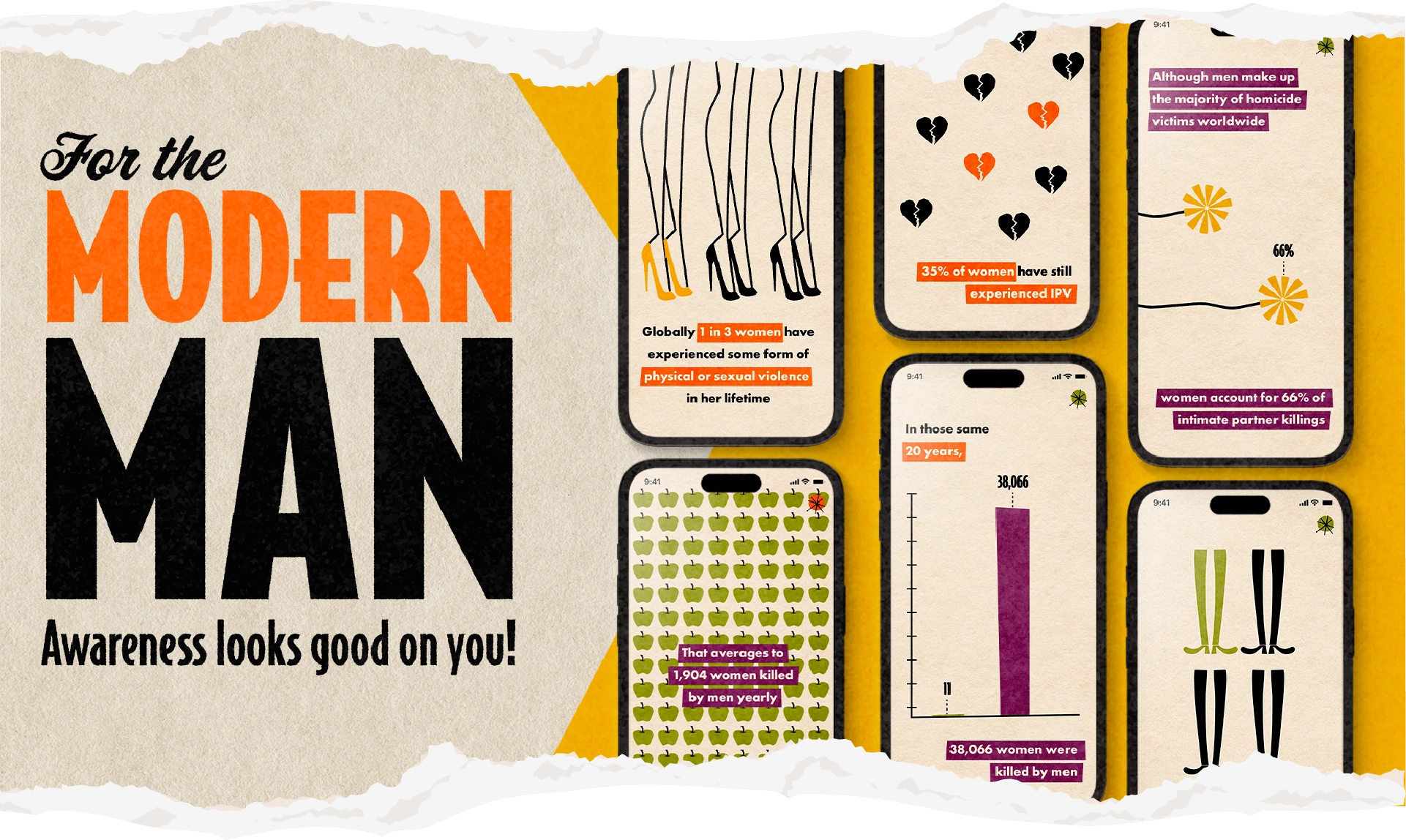
Target Audience
Men aged 16 and older, engaging a spectrum of perspectives on gender-based violence to foster open dialogue. Women serve as a secondary audience, guiding men toward resources and amplifying the campaign’s reach and impact.
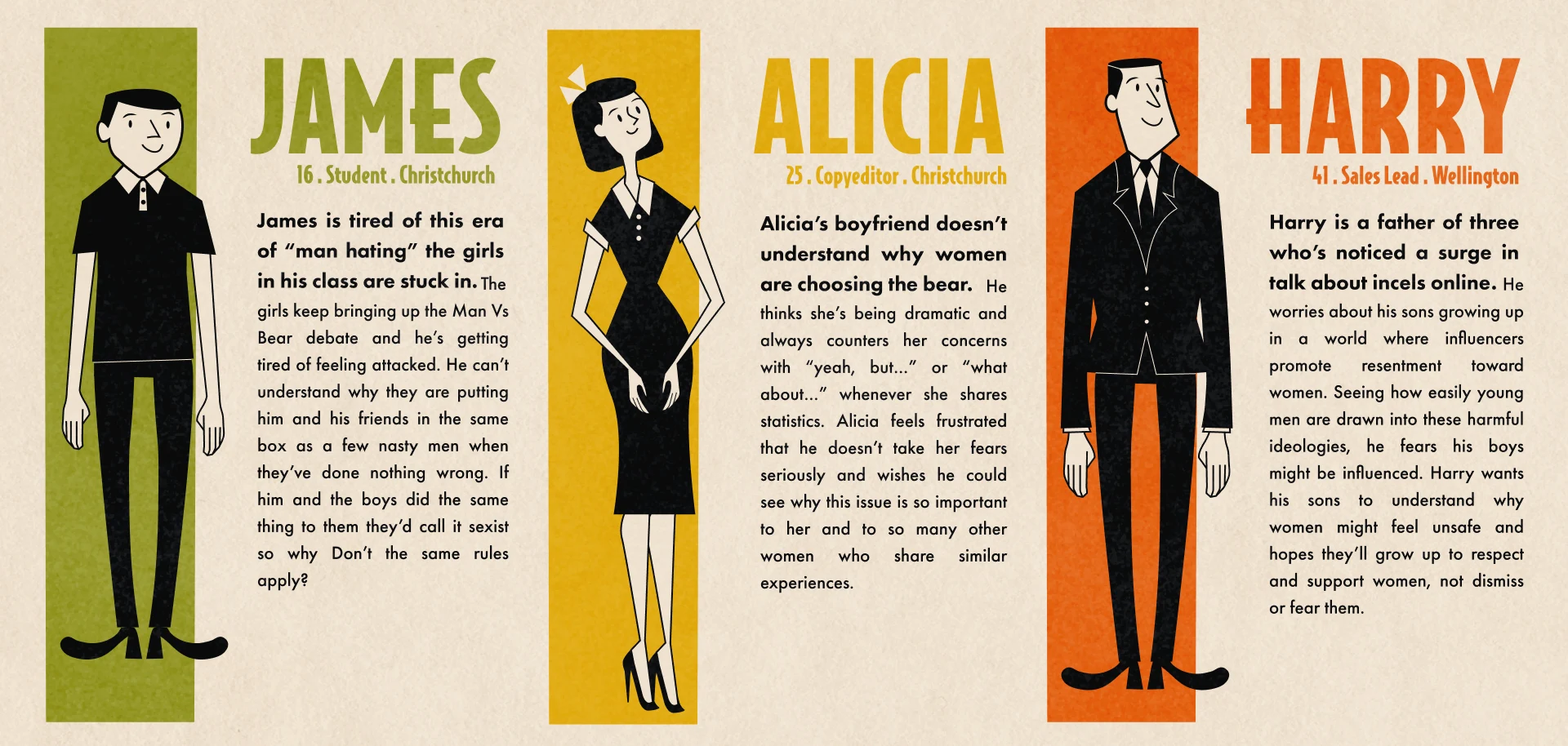
Research
Primary:
Empathy interviews with men aged 24–31 explored their perspectives on gender-based violence and the “bear vs. man” sentiment.
- Responses revealed strong awareness of women’s safety issues, with all participants knowing women who had experienced sexual or physical violence.
- Many felt uncomfortable with the perception that all men could be viewed as threats, emphasising the need for a calm, non-confrontational campaign approach.
- Participants struggled to find clear, factual information, often feeling overwhelmed by complex data or unsure of reliable sources. This highlighted the need for accessible, engaging resources to deepen understanding of women’s fears.
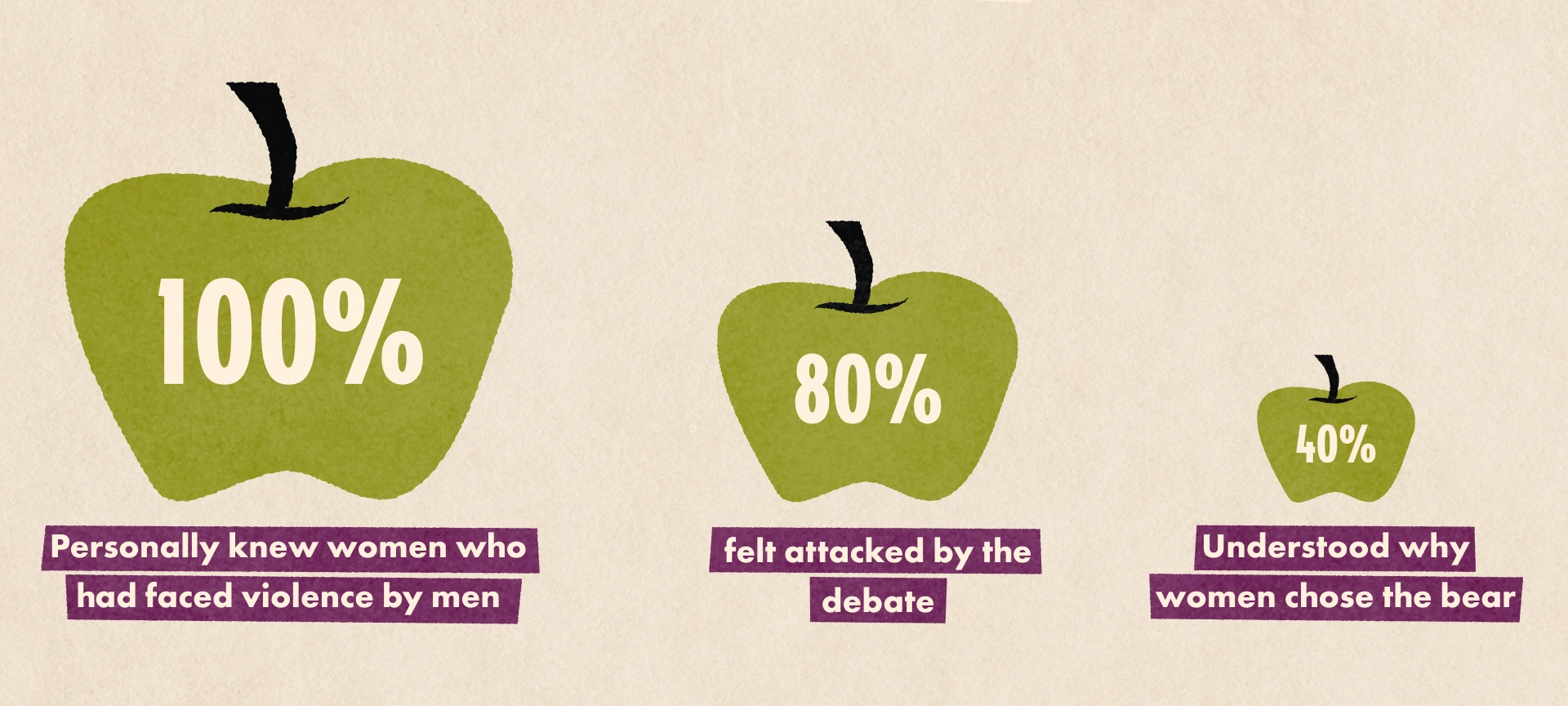
Secondary:
- Meredith Li-Vollmer’s Graphic Public Health served as a key case study, demonstrating how visual storytelling and narrative flow make complex issues more approachable. This inspired the use of an interactive scrollytelling format to guide users through sensitive topics with empathy and a non-confrontational tone.
- Reputable sources such as UN Women, WHO, and the Violence Policy Center (VPC) were utilised for primary data research, ensuring accuracy and impartiality. These sources offered extensive insights into the prevalence, patterns, and impacts of violence against women.
Visual Design
The visual design draws inspiration from a mid-century aesthetic, using illustrations, typography, colour, and texture to evoke the printed materials of the 1950s and ’60s. This style symbolically critiques the perception of sexism as a “thing of the past” while emphasising its continued relevance.
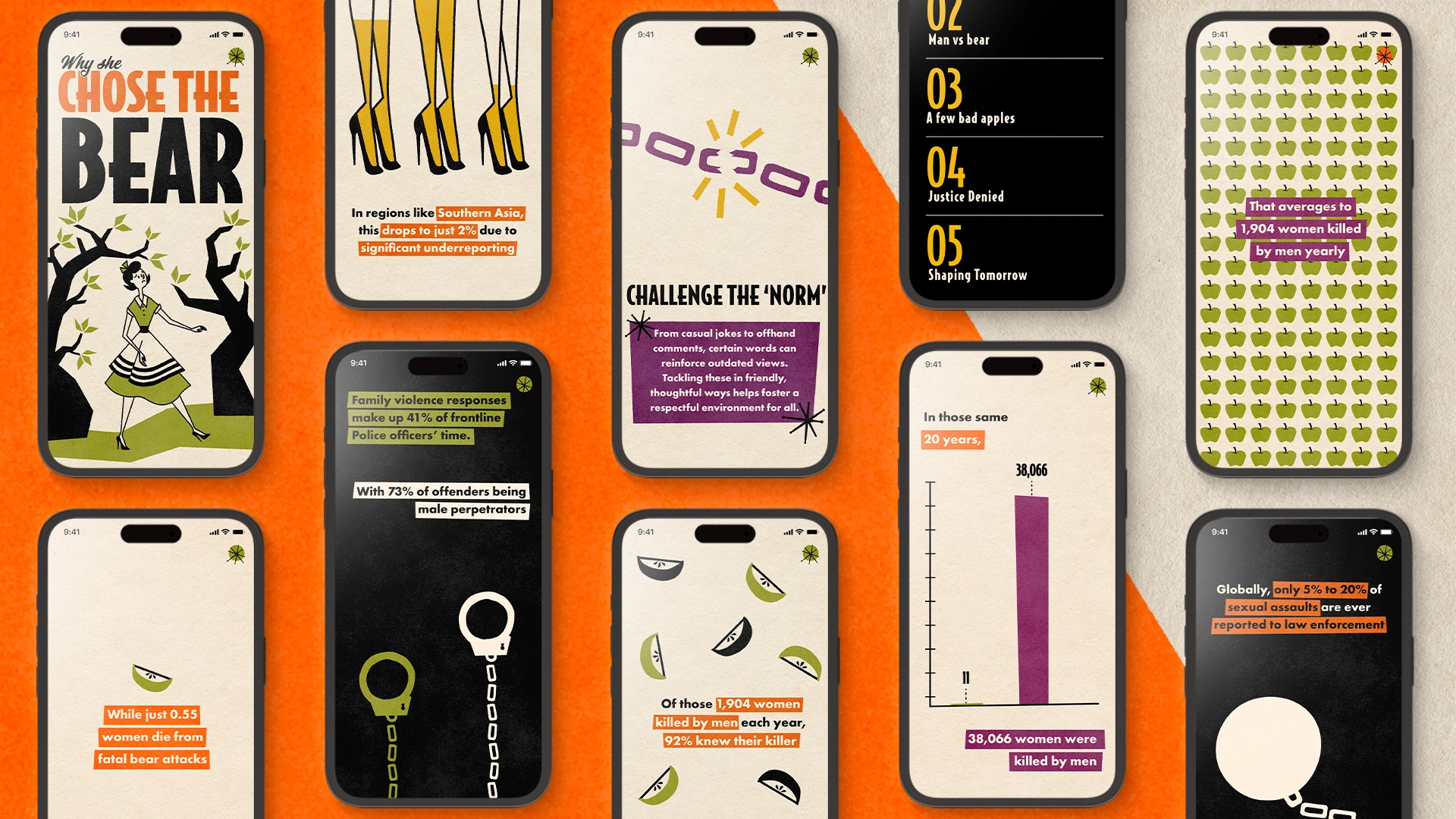
storytelling
Narrative flow
A light-hearted, mid-century modern tone introduces each chapter, with an approachable narrative that empathises with the target audience. This eases them into the serious conversation about gender-based violence, guiding them along the journey without making them feel attacked.
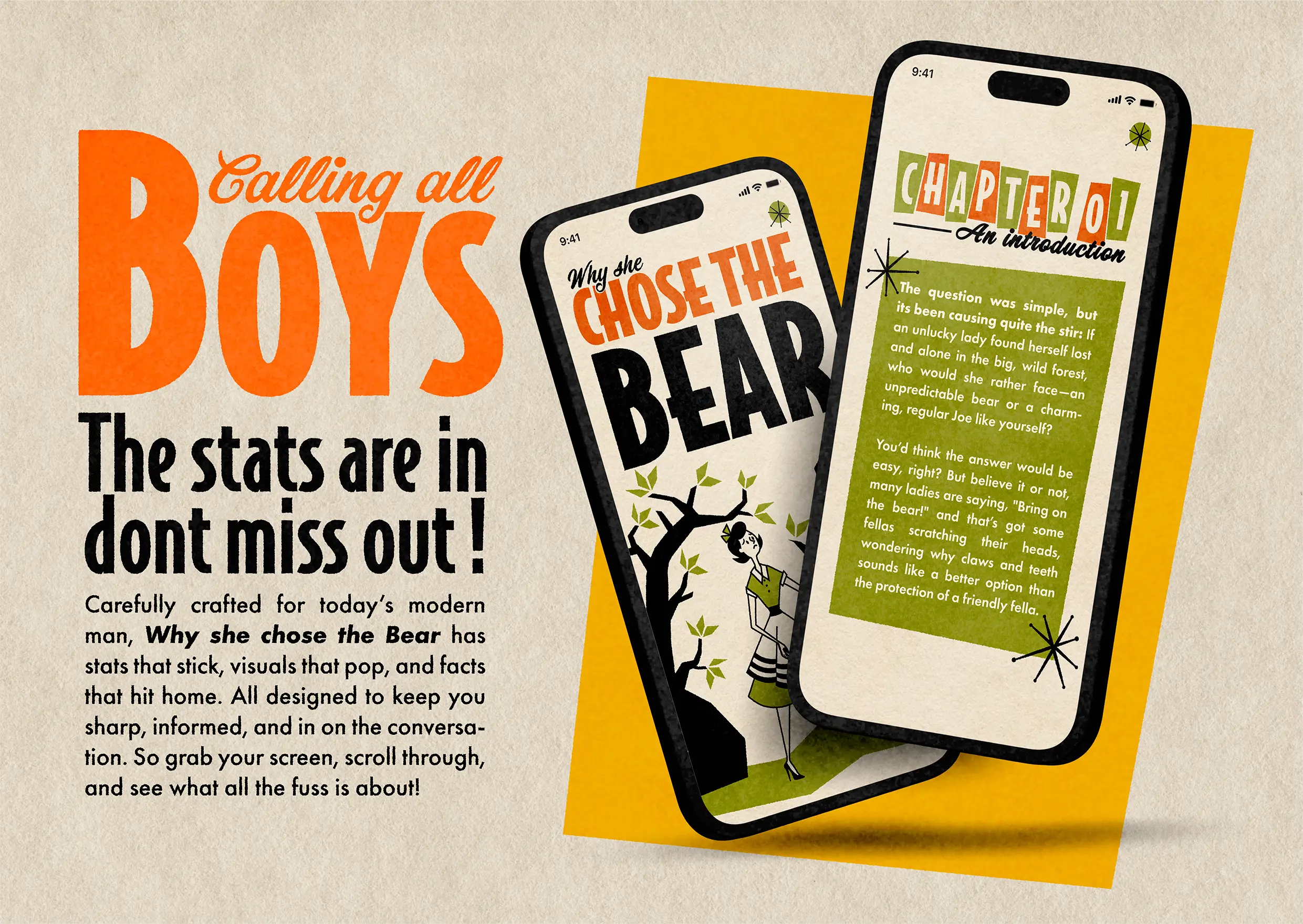
Data visualisation
Challenging facts and statistics were conveyed through scrollytelling data visualisation, featuring simple geometric illustrations and bold colours. This approach aimed to engage male audiences with hard truths in a non-confrontational manner, encouraging reflection on gender inequities.

Visual Metaphors
Symbolism is used to convey the emotional weight and societal impact of gender-based violence, translating complex data into relatable imagery. From the “bad apples” to the broken scales, each illustration reinforces themes of systemic failure and societal detachment, allowing data to resonate personally. This symbolic approach bridges statistics and storytelling, making the information accessible, memorable, and impactful for a broad audience.
Website walkthrough
Why She Chose The Bear aims to inspire thoughtful reflection and ignite conversations on gender-based violence.
Through storytelling and robust statistics, the campaign invites men to acknowledge women’s real threats and reflect on their role in creating a safer world. For those ready to make a difference, it offers practical steps towards positive change, empowering everyone to contribute to a future where women feel safe and supported.
Creative meadia strategy
The creative media strategy focuses on maximising shareability, accessibility, and engagement through mobile optimisation and strategic platform selection. Designed with a mobile-first approach, the content is optimised for small screens with shareable visuals, animations, and clear statistics. This approach fosters awareness, encourages conversations, and boosts organic reach through user-driven sharing.
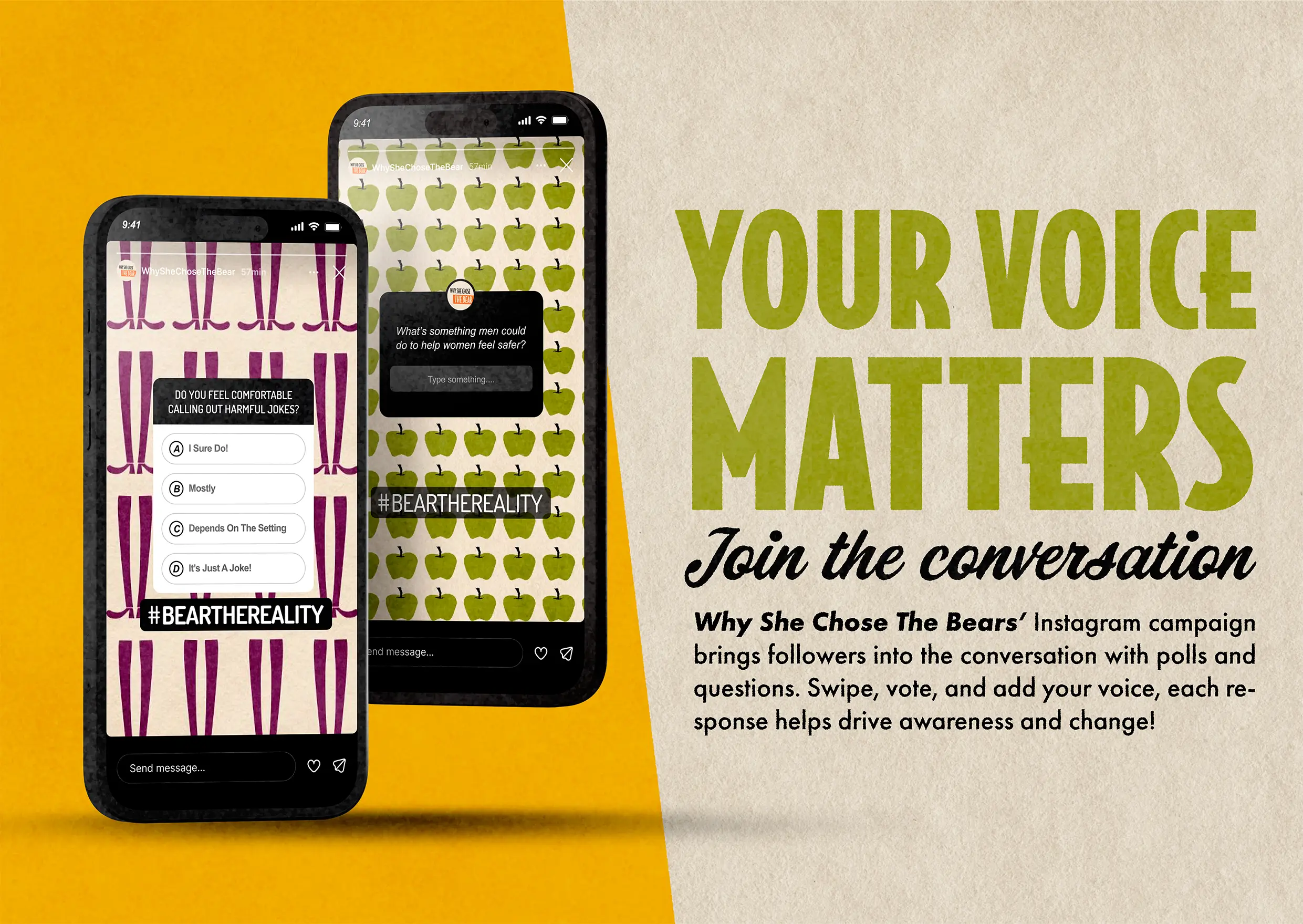
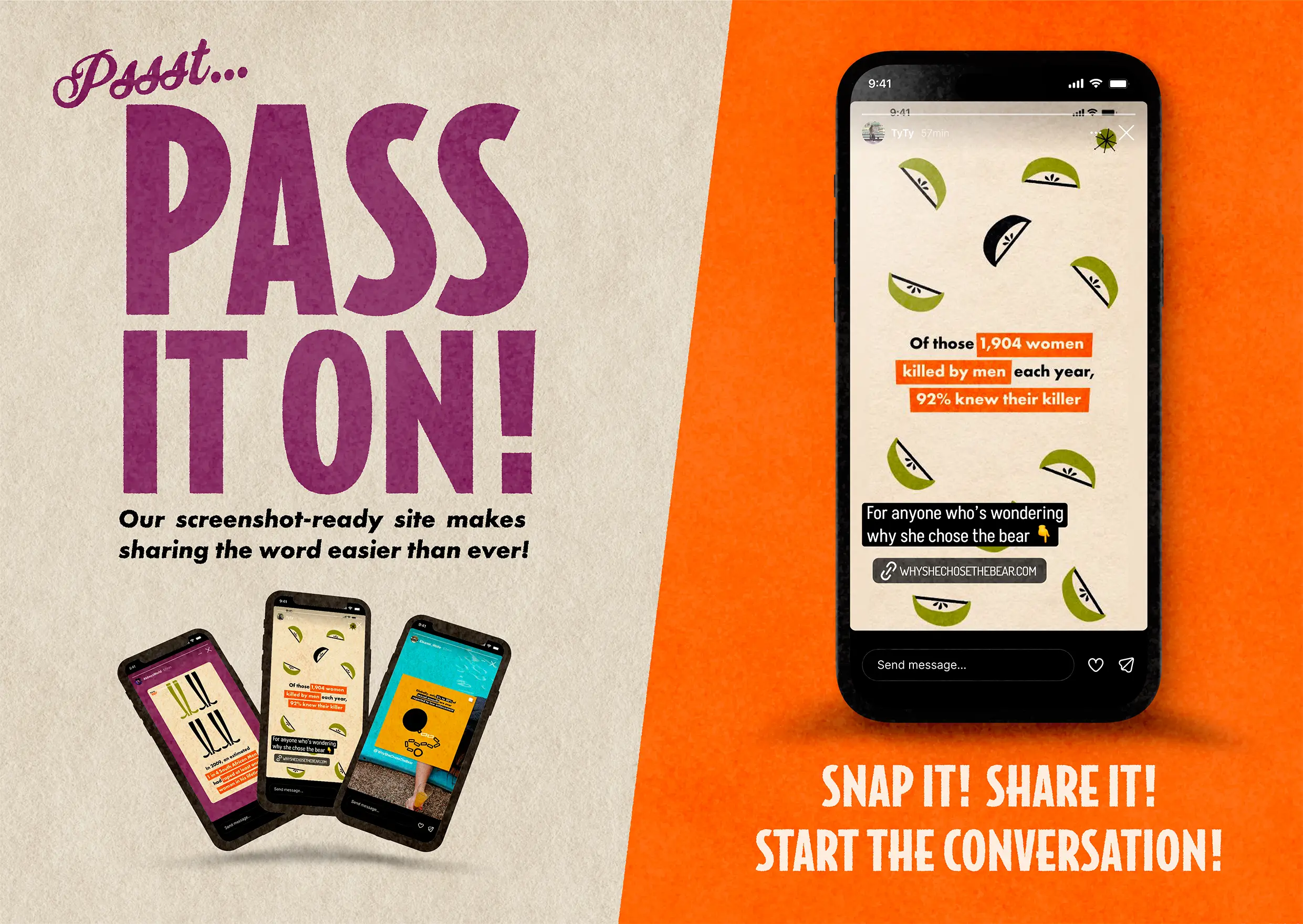
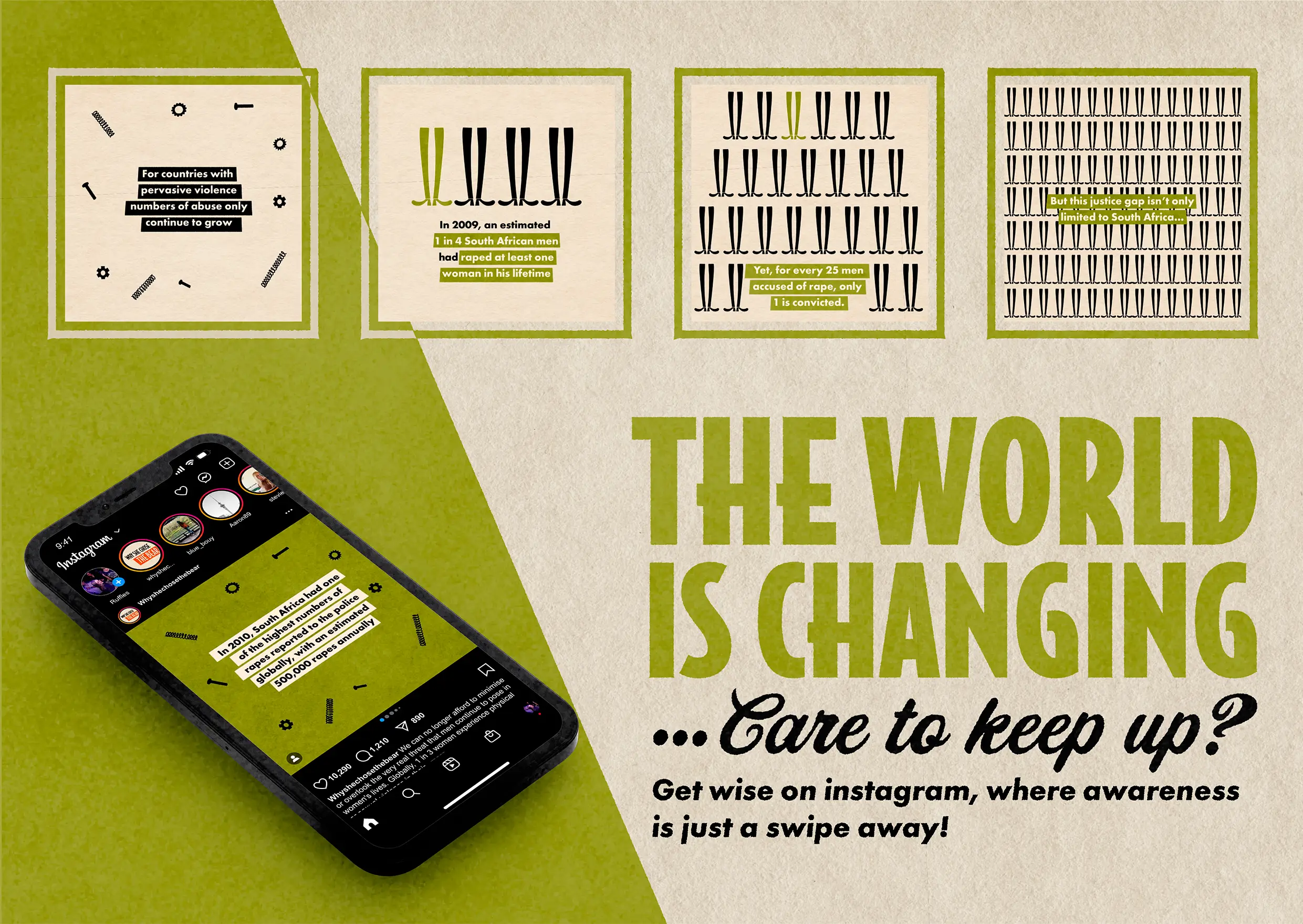
The Future
A key ambition for Why She Chose The Bear's future would be to expand globally by adapting the campaign to reflect country-specific statistics and contexts. Localisation would enhance relevance, while the possibilities of partnerships with organisations like WHO and UN Women could amplify awareness, fund studies on underreported violence, and make research more accessible. Collaborations with governments could support prevention programmes and school initiatives, engaging young people through workshops and talks. These efforts aim to foster awareness, encourage conversations, and drive meaningful change worldwide.
